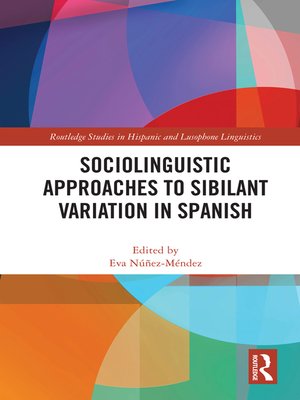Sociolinguistic Approaches to Sibilant Variation in Spanish
ebook ∣ Routledge Studies in Hispanic and Lusophone Linguistics
By Eva Núñez-Méndez

Sign up to save your library
With an OverDrive account, you can save your favorite libraries for at-a-glance information about availability. Find out more about OverDrive accounts.
Find this title in Libby, the library reading app by OverDrive.



Search for a digital library with this title
Title found at these libraries:
| Library Name | Distance |
|---|---|
| Loading... |
Social processes and the nature of language variation have driven sibilant variation across the Spanish-speaking world. This book explores the current state of Spanish sibilants and their dialectal variations.
Focusing on different processes undergone by sibilants in Spanish (e.g., voicing, devoicing, weakening, aspiration, elision) in various geographical areas and language contact situations, each chapter offers an analysis on a unique sociolinguistic case from different formal, experimental, and data-based approaches. The opening chapter orients the reader with an overview of sibilant system's evolution, which serves as an anchor to the other chapters and facilitates understanding for readers new to the topic. The volume is organized around three thematic sections: part one, Spain; part two, United States; and part three, Central and South America. The collection includes research on dialects in both Peninsular and Trans-Atlantic Spanish such as Jerezano, Caribbean Spanish in Boston and New York City, Cuban Spanish in Miami, Colombia-Barranquilla Spanish, northern Buenos Aires Argentine Spanish, and USA heritage Spanish, among other case studies.
This volume offers an original and concise approach to one of the most studied variables in Spanish phonetics, taking into account geographically-based phonetic variation, sociolinguistic factors, and various Spanish language contact situations. Written in English, this detailed synthesis of the wide-ranging geolinguistic features of Spanish sibilants provides a valuable resource for scholars in Hispanic studies, linguistics, Spanish dialectology and sociolinguistics.







